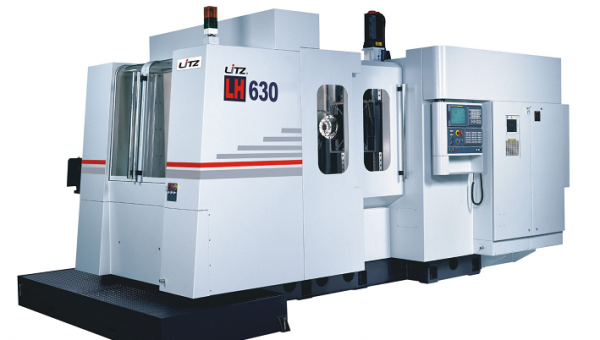Horizontal vs. Vertical Milling Machines – Which Do You Need?
16 Oct 20
Milling is a common machining process that removes material from a stationary workpiece using a rotating cutting tool. The material always remains stationary in the milling process while your machine’s cutting tool rotates. As the cutting tool moves around, it presses against your workpiece and shapes your material as you desire. These machines can be both horizontally and vertically oriented.
The spindle’s orientation separates a vertical milling machine from a horizontal one. Vertical machining centers usually have long and thin cutting tools, while horizontal milling machines have shorter and thicker cutting tools. Horizontal mills are ideal for cutting heavier and deeper grooves into the material, while vertical mills are ideal for milling more parts with more detail.
To make an educated decision as to which type of milling machine will best suit your needs, read our guide below.
The benefits of a vertical milling machine
A vertical turret milling machine is incredibly versatile. These machines can be easily adjusted and manoeuvred to cut various shapes, making them suitable for many projects. Manual movement is still required to cut in different directions, which involves employee attention. However, maintenance is low with this type of machine, while functionality is high, making them particularly ideal for industrial manufacturing (such as cutting automobile parts).
In short, the benefits of vertical milling machines are:
- they are versatile
- they require little maintenance
- they offer high functionality
The benefits of a horizontal milling machine
Horizontal milling machines are ideal when there is less need for accuracy, the material is harder to work through, and your grooves need to be thicker or deeper. Horizontal milling machines can perform quicker than their vertical counterparts, and finished results have smoother surfaces. Due to the setup of a horizontal milling machine, gravity aids in pulling chips out of your material, and your work will require less fabrication at the end.
In short, the benefits of horizontal milling machines are:
- they provide quick milling
- they create a smooth finish
- milled materials will require less fabrication
Vertical vs horizontal milling machine costs
Operational uptime and productivity
Horizontal milling machines are more expensive to purchase than their vertical counterparts, with fewer trained operatives available to run them. That being said, a skilled employee could keep two vertical machines cutting 75% of the time, while an attentive employee could keep two horizontal machines cutting around 90% of the time – which is much more productive.
Precision and material waste
Horizontal milling machines have a shorter processing time per part, lower machining and labour costs, and perform three-side machining. This means that a horizontal milling machine can reach three faces of a workpiece in one cycle. Therefore, features that relate to one another can be milled in the same process to assure accuracy and no mistakes in the positioning of new cuts. Material is wasted less often in this case, saving money for your business in the long run.
Initial costs and milling complexity
Vertical milling machines are initially more attractive due to their lower price point, and they’re more than worth it for less complex tasks. If your company is smaller, the investment in a vertical milling machine may seem more reasonable. They are still highly accurate thanks to their computer numerical control, and their thinner cutting tools keep milling precise. Smaller products such as pencils are milled with vertical milling machines since vertical machines can mill at detail and fulfil large jobs with some oversight.
Milling machines are an investment
Both vertical and horizontal milling machines are a wise investment for your business. However, each machine type has economic and functional upsides and downsides. Vertical milling machines are cheaper in terms of the initial purchasing cost but don’t operate at the quick capacity of a horizontal machine. Horizontal milling machines may cost more initially but could save your business money in the long run with their fast processing times and minimal need for employee attention.
Milling machine FAQ
What is CNC milling?
CNC milling uses programmed tools to remove material from a workpiece. With CNC milling, the workpiece is stationary.
Do milling machines require maintenance?
Yes, milling machines require maintenance. To maintain optimal performance, you will need to do three things; lubricate your milling machine, clean it and carry out regular servicing. These require a high level of expertise to ensure they are correctly done. Professional milling machine servicing, cleaning and parts replacement are essential to prolonging the effective lifespan of any milling machine.
Which milling machine is best?
There is no “best” milling machine. There is only the machine that is best for your specific requirements and budget. This could be a vertical or horizontal CNC milling machine or even a manual milling machine.
Find the right milling machine for you
Many factors will determine which machine is best for you. Consider the size of your company, what type of jobs you’d require from your milling machine, and the budget you are prepared to part with for your new machine. If you are unsure and want further guidance, don’t hesitate to contact us.
We offer a full comprehensive range of milling machines and lathes. We stock all the leading brands, including Correa, Geminis, and Honor lathes and milling machines. We also have a team of certified and accredited engineers to handle all of your milling machine servicing needs.
Learn more about milling machines
Explore our blog for more information on milling machines and to ensure you choose the right machine for your needs. We have many other blog posts filled with expert advice to make the choice as easy as possible. For an overview of milling machines, start with “Your Guide To Milling Machines: What They Are and When To Use Them“. Or learn why a manual machine may be the right option for you with “The Benefits Of Choosing Manual Milling and Lathe Machines“.



